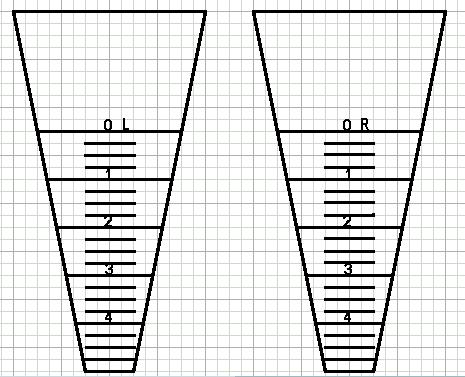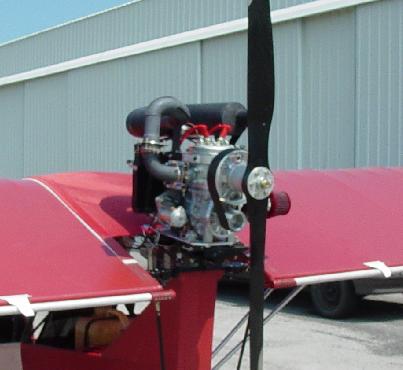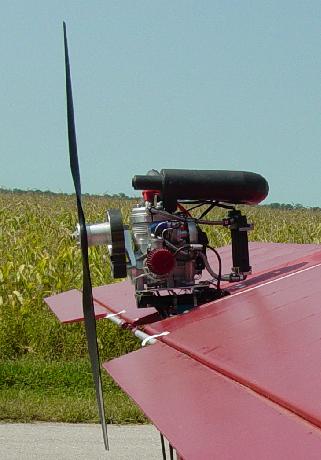|
|
Propeller Clearance and Engine Axis Adjustment
 When designing the engine mounting plate, I set the engine so that the propeller was at the minimum clearance distance as specified by IVO - five inches. After mounting the engine and propeller on the FireFly, I measured the distance between the propeller tips as they passed by the aileron tubes and made sure tip clearances were equal on both sides. But how does one know what path the propeller tips actually take during flight?
When designing the engine mounting plate, I set the engine so that the propeller was at the minimum clearance distance as specified by IVO - five inches. After mounting the engine and propeller on the FireFly, I measured the distance between the propeller tips as they passed by the aileron tubes and made sure tip clearances were equal on both sides. But how does one know what path the propeller tips actually take during flight?
|
 To come up with an answer I drew up some propeller tip clearance monitors. They are attached to the wing with masking tape just a head of where the propeller tip passes by behind the aileron tube. As the propeller flexes forward as rpm is increased, the tip of the propeller progressively tears off the paper. After the flight one can tell how close the propeller tips have come to the aileron tube.
To come up with an answer I drew up some propeller tip clearance monitors. They are attached to the wing with masking tape just a head of where the propeller tip passes by behind the aileron tube. As the propeller flexes forward as rpm is increased, the tip of the propeller progressively tears off the paper. After the flight one can tell how close the propeller tips have come to the aileron tube.
|
 One of the things I noticed was that the propeller clearance does not remain equal in flight, which indicates the engine/propeller mass is swiveling due to flex by the Lord mounts reacting to torque and, mass and gyroscopic forces. The direction the engine moved to corresponded to a right ball slip indication and right rudder to hold the ball centered in level flight. I loosened the engine from the mounting plate and rotated it to give less static clearance (about a half an inch) to the left aileron tube. During the next flight, I discovered that at the same cruise speed with no pressure on the rudder pedals, the ball was displaced to about half the distance as before.
One of the things I noticed was that the propeller clearance does not remain equal in flight, which indicates the engine/propeller mass is swiveling due to flex by the Lord mounts reacting to torque and, mass and gyroscopic forces. The direction the engine moved to corresponded to a right ball slip indication and right rudder to hold the ball centered in level flight. I loosened the engine from the mounting plate and rotated it to give less static clearance (about a half an inch) to the left aileron tube. During the next flight, I discovered that at the same cruise speed with no pressure on the rudder pedals, the ball was displaced to about half the distance as before.
I print out out a bunch of these indicators, and every time I make a change relative to engine and/or propeller I install a new set.
|
|
|